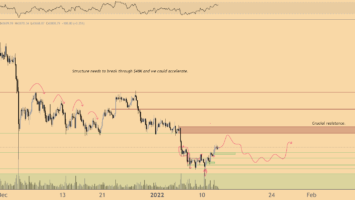Stablecoins are often discussed with regard to their “stability.” It is usually questioned whether a stablecoin is sufficiently backed with money or other assets. Undoubtedly, it is a very important aspect of stablecoin value. But, does it make sense if the legal terms of a stablecoin do not give you, the stablecoin holder, the legal right to redeem that digital record on blockchain for fiat currency?
This article aims to look into the legal terms of the two largest stablecoins — Tether (USDT) by Tether and USD Coin (USDC) by Centre Consortium, established by Coinbase and Circle — to answer the question: Do they owe you anything?
Related: Stablecoins will have to reflect and evolve to live up to their name
Tether
Article 3 of Tether’s Terms of Service explicitly states:
“Tether reserves the right to delay the redemption or withdrawal of Tether Tokens if such delay is necessitated by the illiquidity or unavailability or loss of any Reserves held by Tether to back the Tether Tokens, and Tether reserves the right to redeem Tether Tokens by in-kind redemptions of securities and other assets held in the Reserves. Tether makes no representations or warranties about whether Tether Tokens that may be traded on the Site may be traded on the Site at any point in the future, if at all.”


Let us unpack this. First, Tether may delay any claim in case of lack of liquidity, unavailability or loss of reserves. We reasonably should ask how this can even happen if they claim (in the same article) that “Tether Tokens are 100% backed by Tether’s Reserves.” The answer is found down below in the terms. USDT is “valued” 1:1 but not exclusively backed with fiat currency. And as per the terms, “the composition of the Reserves used to back Tether Tokens is within the sole control and at the sole and absolute discretion of Tether.”
As the United States Federal Reserve Board concluded in their recent report:
“They are backed by assets that may lose value or become illiquid during stress, leading to redemption risks, and lack of transparency may exacerbate those risks.”
More interesting appears the part of Tether’s terms where they reserve the right to return in-kind. It means you buy USDT for the U.S. dollars, but they can return you a bond, a stock or “other assets held in the Reserves.” And, who knows if these assets will be worth anything?


It should be noted that redemption from Tether is possible if you are “a verified customer of Tether.” Normally, crypto exchanges and other financial institutions are direct customers of Tether. End-users exchange stablecoins with their applications, not with Tether, and hence must check with legal terms that such providers cast. Nevertheless, according to Tether’s FAQ, individuals can also open an account with Tether after accomplishing a Know Your Customer (KYC) check.
Related: The United States turns its attention to stablecoin regulation
Circle USDC
Circle has much in common with its twice-as-big rival, though surprisingly, its terms are even more discouraging. They, similarly, do not promise to hold equivalent fiat reserves and back their stablecoin with “an equivalent amount of U.S. Dollar-denominated assets,” quoted from Article 1.
Promising Article 2 of their terms states that “Circle commits to redeem 1 USDC for 1 USD.” The bad news is that this rule applies only to Circle partners (crypto exchanges, financial institutions, etc.), which they call users Type A. End-users become customers of these partners (say, when you open an account with a crypto exchange), and there is no way for an individual to become Circles’ direct user and exercise the right to redemption.
In Article 13, they clarify that Circle does not guarantee that the value of 1 USDC will always equal 1 USD because “Circle cannot control how third parties quote or value USDC.” This means Circle does not mandate their partners to cast any specific terms to their end-users, which gives such stablecoin providers freedom in what they legally promise to their customers. Circle states they are not “responsible for any losses or other issues that may result from fluctuations in the value of USDC.”
Simply not equal
Both Tether’s USDT and Circle’s USDC are not legally equal to fiat money. Moreso, their reserves, which they claim to ensure 1:1 value, are not fully pegged to fiat. They back their digital tokens with various assets, such as securities, which can eventually decrease in value and create trouble with stablecoin liquidity.


The main question was whether an individual holding the stablecoin could convert it to fiat. The short answer is that there is no such right that the customer can exercise through legal means, such as claiming it in court. In the case of Tether, they let an individual become their direct customer to redeem USDT. But, they leave the right to return not fiat but any asset in their reserves. In the case of Circle, they legally promise redemption but do not admit individuals to exercise this right, which leaves the customer one to one with multiple exchanges, which do not necessarily guarantee this right.
This article is for general information purposes and is not intended to be and should not be taken as legal advice.
The views, thoughts and opinions expressed here are the author’s alone and do not necessarily reflect or represent the views and opinions of Cointelegraph.
Oleksii Konashevych has a Ph.D. in law, science and technology and is the CEO of the Australian Institute for Digital Transformation. In his academic research, he presented a concept of a new generation of property registries that are based on a blockchain. He presented an idea of title tokens and supported it with technical protocols for smart laws and digital authorities to enable full-featured legal governance of digitized property rights. He has also developed a cross-chain protocol that enables the use of multiple ledgers for a blockchain estate registry, which he presented to the Australian Senate in 2021.





















Comments (No)